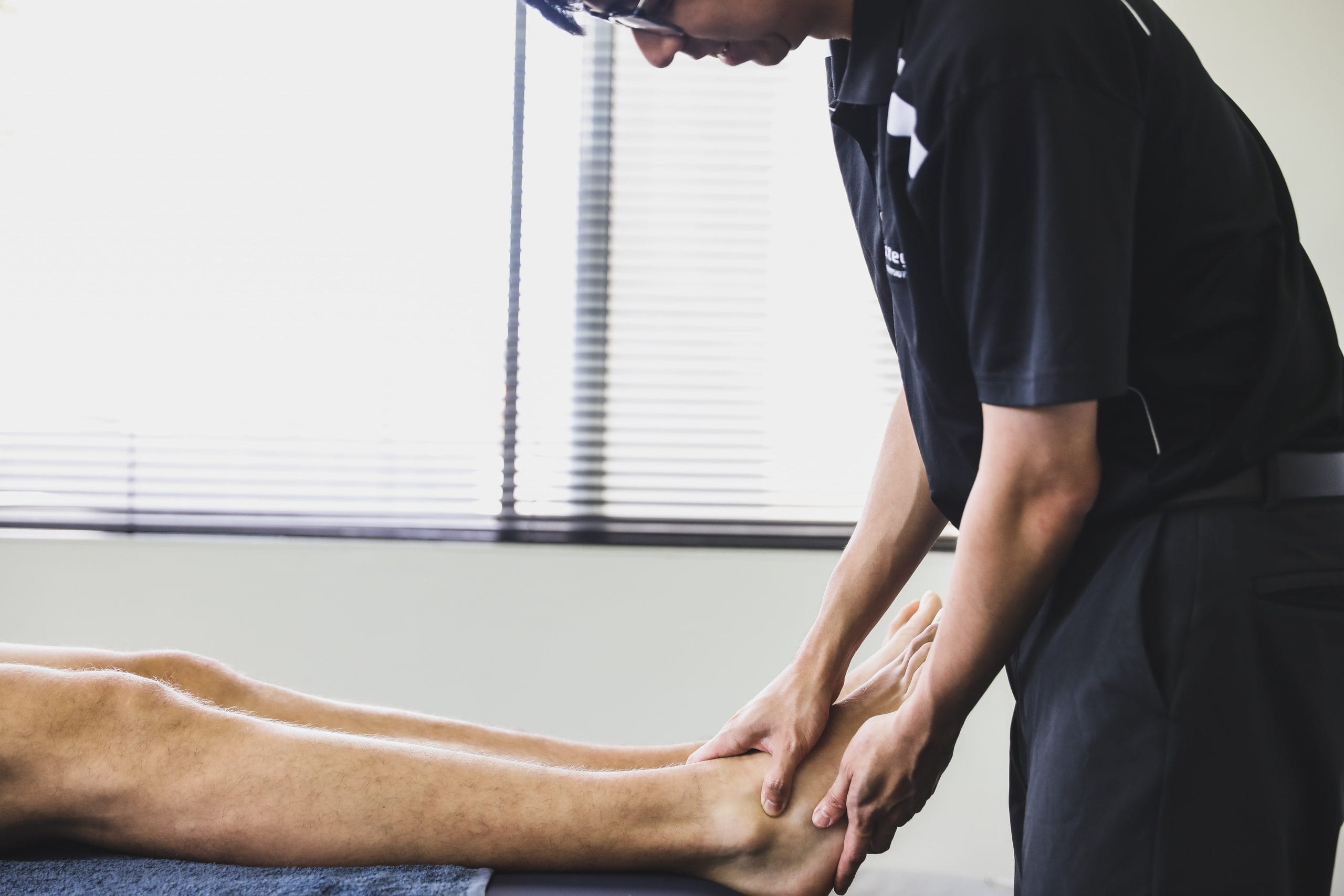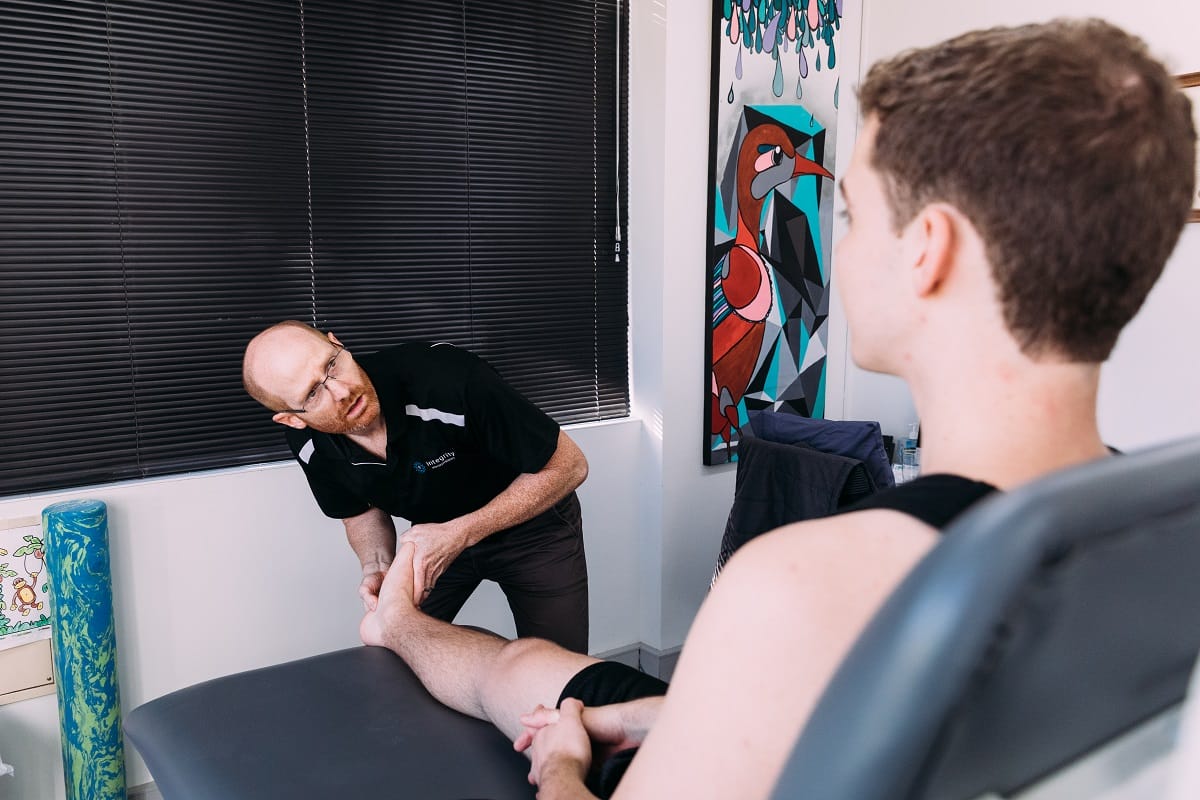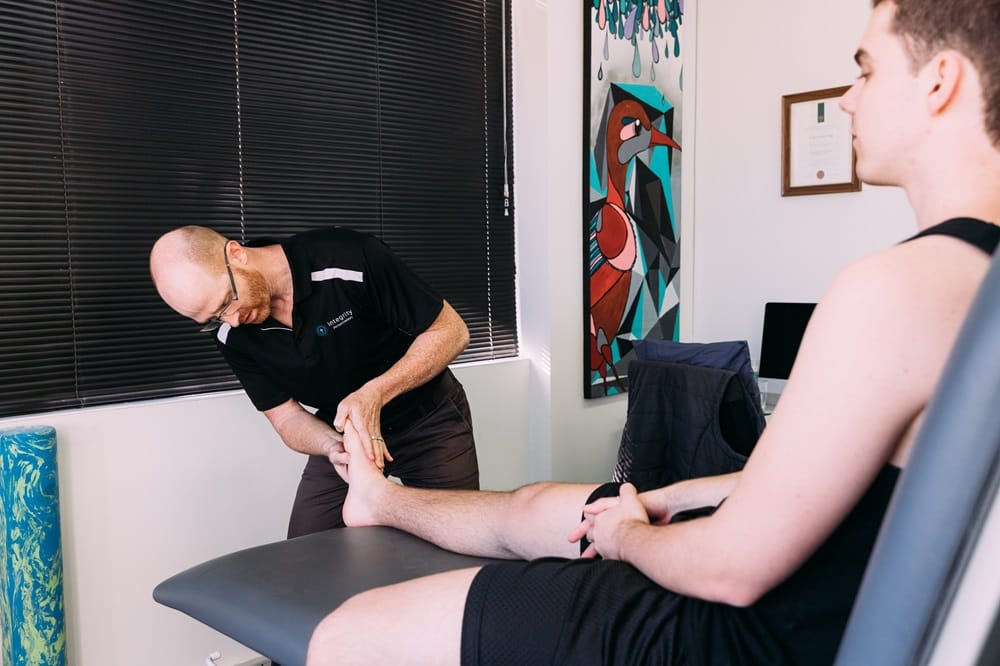
Do you wake up in the morning with a sharp, stabbing pain in your heel? You’re not alone.
Many people suffer from foot pain that can make even the simplest activities feel like a challenge. One of the most common causes of this discomfort is a condition called plantar fasciitis.
But what exactly causes this mysterious foot pain, and more importantly, how can it be stopped? Let’s find out.
What is plantar fasciitis?
Plantar fasciitis is a common foot condition that can really put a damper on your day! It’s characterised by pain and inflammation in the plantar fascia, which is the thick band of tissue running along the bottom of your foot. If you’ve ever felt a sharp, stabbing pain in your heel, especially with those first steps in the morning or after sitting for a while, plantar fasciitis might be the culprit.
Let’s break it down a bit. The plantar fascia is a crucial ligament that connects your heel bone to your toes, forming the arch of your foot. Think of it as a built-in shock absorber. Helping your foot handle the stresses of walking and running. When this ligament is overworked or strained, tiny tears can develop. These micro-injuries lead to irritation and inflammation, causing that pesky heel pain associated with plantar fasciitis.
Symptoms of plantar fasciitis
Recognising the symptoms early is crucial for effective management and relief.
- Sharp, stabbing pain in the heel: This is often the worst with those first few steps in the morning or after you’ve been sitting for a while.
- Flare-ups: You might notice the pain get worse after standing for a long time or when you first stand up after sitting.
- Movement-related pain: The discomfort usually eases up once you start moving around, but it can come back after long periods of standing or after exercises.
- Burning or aching sensation: Some people feel a burning or aching pain along the bottom of their foot.
- Localised pain: The pain is usually felt near the heel, but can also spread along the arch of your foot.
Common causes of plantar fasciitis
Plantar fasciitis often stems from repetitive strain on the plantar fascia ligament. Common causes include:
- Overuse: Activities like running, dancing, or prolonged standing.
- High-impact activities: Sports involving jumping or sudden movements.
- Foot structure: Flat feet, high arches, or an uneven gait.
- Age: Most common between ages 40-60 as the ligament loses elasticity.
- Weight: Extra weight increases pressure, leading to inflammation and pain.
- Occupation: Jobs that require a lot of standing or walking on hard surfaces, like teaching, factory work, or retail, can put stress on the plantar fascia.
- Improper footwear: Shoes lacking proper arch support and cushioning, or that don’t fit well, increase stress.
- Exercise habits: Starting new or intense physical activities without proper preparation.
- Pregnancy: This can place extra weight on the heel.
- Biomechanics: Muscle imbalances throughout the lower limb.
Diagnosis of plantar fasciitis
Diagnosing plantar fasciitis usually starts with a visit to your healthcare provider, who will ask about your symptoms, daily activities, and exercise habits. They’ll perform a physical exam, checking for tenderness in your heel and arch. Flexing your foot while they press on the plantar fascia helps confirm the diagnosis.
Treatment for plantar fasciitis
At-home
- Rest is key. Give your feet a break from activities that worsen pain. This means reducing activity by at least 20%.
- Apply ice. Do this to the affected area for 15-20 minutes several times a day to reduce inflammation and numb the pain.
- Stretch, stretch, stretch! Regularly stretching your calf muscles and the plantar fascia can improve flexibility and reduce tension on the ligament. Exercises like calf stretches, toe stretches, and using a towel to pull the toes toward you are beneficial.
- Get some orthotics. Custom orthotic inserts can provide better arch support and cushioning, reducing pressure on the plantar fascia.
- Over-the-counter pain relief: Medications like ibuprofen can help reduce pain and inflammation; they can be used as part of a broader treatment plan for symptom management.
Professional treatment
- Physiotherapy: A physio for plantar fasciitis can teach you exercises to strengthen the muscles in your feet and lower legs, improve your gait, and reduce pain.
- Corticosteroid injections: These deliver powerful anti-inflammatory medication directly to the affected area, providing pain relief for several weeks or months. These are limited to a few treatments per year due to potential side effects, such as the weakening of the plantar fascia.
- Shockwave therapy: This uses high-energy shockwaves to stimulate healing in the plantar fascia. It’s a non-invasive treatment that can improve blood flow and reduce pain, though some discomfort during sessions may occur.
- Surgery: This is usually a last resort when other treatments fail. Options like plantar fasciotomy involve small incisions to relieve tension, while minimally invasive techniques use smaller incisions for quicker recovery. Consult with your doctor to talk through your options.
The role of physiotherapy in plantar fasciitis treatment
Physio plays a crucial role in managing and treating plantar fasciitis. Here are a few ways we can help.
Manual therapy
These are hands-on techniques to mobilise soft tissue. Your physio might use:
- Massage: Deep tissue massage to the plantar fascia and surrounding muscles helps reduce tension and improve circulation, promoting healing and reducing pain.
- Mobilisation: Gentle manipulation of the foot and ankle joints can improve flexibility and movement, reducing strain on the plantar fascia.
- Myofascial release: This technique targets the fascia, a connective tissue surrounding muscles, to relieve tightness and improve overall foot function.
Exercise programs
Tailored exercise routines focused on stretching and strengthening, including:
- Stretching exercises: Regularly stretching the plantar fascia, Achilles tendon, and calf muscles can improve flexibility and reduce tension. This might include calf stretches to strengthen your muscles and reduce stress on your plantar fascia. A plantar fascia stretch can also be great for stretching the bottom of your foot.
- Strengthening exercises: Building strength in the lower leg and foot muscles provides better support and reduces strain. This might include toe curls, arch strengthening or corrective strengthening exercises for muscles throughout the lower limb.
Gait analysis
A gait analysis can help identify if you have any abnormal walking patterns that might contribute to your plantar fasciitis.
Your physio might assess your foot mechanics to identify any issues like overpronation or supination (inward or outward rolling of the foot). From there, they can provide guidance on how to use exercise to modify your walking pattern to reduce stress on your plantar fascia. This might also include footwear or orthotic recommendations to support proper alignment.
Education and advice
Education is a big part of physiotherapy. Having the tools and knowledge means you can manage your condition more effectively. Aside from recommendations on footwear and orthotics, your physio might also give you guidance on activity modifications to avoid overloading your plantar fascia.
You’ll also learn how to correct your gait and posture to support your body and alleviate pain.
Preventing plantar fasciitis
Preventing plantar fasciitis involves adopting habits and making choices that reduce strain on the plantar fascia. Here are some practical tips to help you avoid this painful condition.
Proper footwear
Wearing the right shoes is one of the most effective ways to prevent plantar fasciitis. Here’s what to look for:
- Supportive arch: Choose shoes that provide good arch support to distribute pressure evenly across your feet.
- Cushioned sole: Opt for shoes with cushioned soles to absorb shock and reduce impact on your heels and arches.
- Fit and comfort: Ensure your shoes fit well without being too tight or too loose. Proper fit helps maintain the natural alignment of your feet.
- Avoid high heels: Limit the use of high heels as they can increase strain on the plantar fascia.
- Replace worn-out shoes: Regularly replace shoes that have lost their support or cushioning, especially if you use them for sports or prolonged standing.
Stretching
Regular stretching can keep the plantar fascia and surrounding muscles flexible and strong, reducing the risk of injury. Here are some recommended stretches:
- Calf stretch: Stand facing a wall with one foot forward and one foot back. Keep your back leg straight and heel on the ground. Lean forward, bending your front knee until you feel a stretch in your calf. Hold for 30 seconds and switch legs.
- Plantar fascia stretch: Sit with one leg crossed over the other. Grab your toes and gently pull them towards you until you feel a stretch along the bottom of your foot. Hold for 15-30 seconds and repeat several times.
- Toe towel stretch: Sit on the floor with your legs extended. Place a towel around the ball of your foot and gently pull the towel towards you while keeping your knee straight. Hold for 15-30 seconds and switch legs.
Weight management
Maintaining a healthy weight is crucial in preventing plantar fasciitis. Excess weight puts additional stress on your feet, particularly on the plantar fascia. Here are some tips for managing your weight:
- Balanced diet: Eat a well-balanced diet rich in fruits, vegetables, lean proteins, and whole grains to maintain a healthy weight.
- Regular exercise: Engage in regular physical activity to help manage weight and improve overall health. Low-impact exercises like swimming or cycling can be beneficial without putting too much strain on your feet.
- Monitor your weight: Keep track of your weight and make adjustments to your diet and exercise routine as needed to stay within a healthy range.
Activity modification
Modifying your activities can help reduce the risk of plantar fasciitis by minimising strain on your feet. Consider the following adjustments:
- Gradual increase: If you’re starting a new exercise regimen or increasing the intensity of your workouts, do so gradually to allow your feet to adapt.pab
- Cross-training: Alternate between different types of activities to avoid repetitive stress on the plantar fascia. For example, combine running with swimming or cycling.
- Rest and recovery: Give your feet adequate time to rest and recover, especially after high-impact activities. Avoid overtraining and listen to your body’s signals.
- Surface awareness: Be mindful of the surfaces you walk or run on. Hard, uneven surfaces can increase the risk of plantar fasciitis. Whenever possible, opt for softer, more forgiving surfaces like grass or rubber tracks.
Living with plantar fasciitis
Managing plantar fasciitis can be challenging, but with the right strategies, you can reduce discomfort and improve your quality of life.
Remember: with all of the above, consistency is key. Regular adherence to your treatment plan, including stretching, proper footwear, and weight management, is crucial for long-term relief.
Many people experience big improvements, but there’s often a risk of recurrence, especially if contributing factors like poor footwear or high-impact activities aren’t addressed. Making permanent changes to your daily habits can help prevent future flare-ups.
Take the first steps toward relief
Plantar fasciitis can be challenging, but there are effective ways to manage and overcome it. With the right combination of treatments, lifestyle changes, and professional guidance, you can find some relief and regain your mobility.
It’s essential to stay proactive in your care and make necessary changes to prevent future flare-ups. At Integrity Physio, we’re dedicated to helping you every step of the way. Whether you need personalised treatment plans, supportive advice, or just someone to talk to about your condition, we’re here for you.
Don’t let plantar fasciitis hold you back–reach out to our plantar fasciitis physios and book an appointment today.



